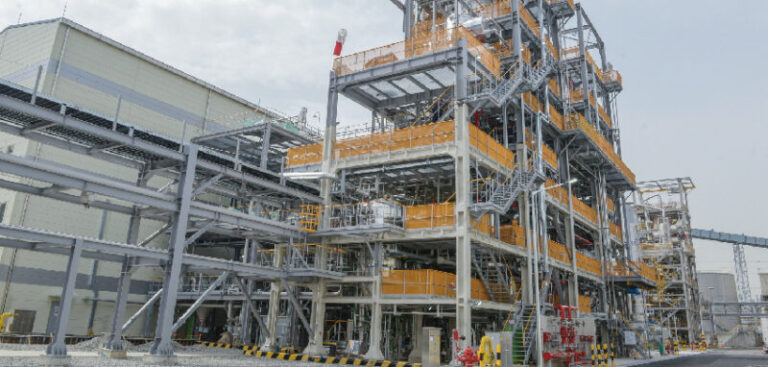LG has announced the launch of a carbon nanotube (CNT) manufacturing plant in Korea, as part of the company’s aim to actively target the growing market for CNTs used as a material for cathodes found within electric vehicle batteries.
The Yeosu CNT 2nd Plant’s capacity was expanded by 1,200 metric tons following a US$58.3m (KRW 65bn) investment, and the facility has already begun commercial operation. Its first operation was in 2017, when capacity was 500 metric tons; current capacity is 1,700 metric tons.
The CNT 2nd Plant was constructed to be the world’s largest single-line production facility with a self-developed fluidized bed reactor. Through complete automation, LG says the plant has been able to achieve stable quality control, alongside a 30% reduction in power consumption due to process innovation.
CNT produced at the LG Chem facility will be supplied to electric vehicle battery companies around the world for use as a conductive additive. It can also be used for application to surface heating elements and semi-conductive high-voltage cables. Thanks to its thermal conductivity, when CNT is used within semiconductor process trays it has excellent resistance to dust, high temperatures, electromagnetic waves and static electricity.
With the expansion of the CNT market, LG Chem aims to begin building a third CNT plant this year to expand capacity and stay ahead of market growth. CNT demand is expected to grow by around 40% per year, with 5,000 metric tons needed in 2020 and an estimated 20,000 tons needed by the automotive sector by 2024.
The company’s CNT business develops competitive products by leveraging the vertical integration from ethylene, a raw material, through to catalysts developed with proprietary technologies and production technologies, including self-developed fluidized bed reactors.
One of LG Chem’s core technologies is catalysts, and the company applies high-quality cobalt-based catalysts that feature a reduced number of magnetic impurities that could negatively affect battery quality. Commonly found iron-based catalysts contain a relatively high amount of metal and magnetic contaminants compared with cobalt, and require a separate post-treatment process for commercialization.
“CNT is a business with a huge potential, as they are used in various products apart from batteries,” commented Kug Lae Noh, president of LG Chem Petrochemicals. “The company, therefore, plans to become a global leader based on expanded production capacity and competitiveness in quality.”


